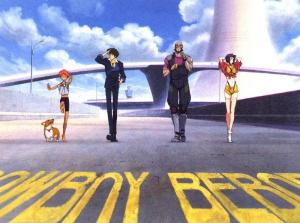S D Burman, one of the best composers in Hindi films through the 50s and 60s hails from Tripura. He composed music for 100 movies, including Bengali films. He was of the royal lineage and began his initial training under his father (Nabadwipchandra Dev Burman) who was a sitarist and a hindustani classical singer.
He learnt under several eminent musicians comrprising K.C. Dey, Ustad Badal Khan (Sarangi player) and Ustad Alauddin Khan.
Although he started his career off with East Bengali and Tripuri folk-music, he soon made a reputation for himself in folk and light classical music. His first major hit was ‘Mera Sundar Sapna Beet Gaya’ from Do Bhai (1947) sung by Geeta Dutt. His huge repertoire of folk tunes of the different traditions in the Tripura Kingdom majorly influenced his film compositions. He composed some beautiful folk songs like ‘O re majhi’ from Bandini, and ‘Chal Ri Sajni’ from Bombay ka Babu, the latter being soulfully sung by Mukesh. All the songs in Bandini are of an authentic rural nature.
Songs like ‘Poocho na kaise maine’ in Raag Ahir Bhairav from the film ‘Meri Surat Teri Aankhen’ are indicators of the fact that Sachin Da was profilic in classical music also. He used the very east Indian folk sound of Raag Pahadi frequently in his compositions. ‘Dil pukare’ from Jewel Thief, ‘Kora kaagaz’ from Aradhana, ‘Gata Rahe Mera Dil’ from Guide and ‘Dil ka bhanwar’ from Tere Ghar ke Saamne are a few songs in Pahadi.
His music immortalized movies like Pyaasa, Bandini and Devdas. In 2004, the soundtrack for Pyaasa was chosen as one of “The Best Music in Film” by ‘Sight & Sound’, the British Film Institute magazine. “Jaane woh kaise log the “ by Hemant Kumar (Hemanta Mukhopadhyay) and “Yeh duniya agar mil bhi jaye to kya hai” by Rafi from Pyaasa describe heart wrenchingly the agonies of a struggling poet.
He also sang a few songs like ‘O re majhi’ from Bandini, ‘Allah Megh De’ from Guide and ‘Safal hogi teri Aradhana’ in his unique raspy voice that had a very pleasant rustic touch to it. He won the National Award for best male playback singer in the year 1970 for Aradhana. Incidentally, Aradhana is the same film that has the number ‘Roop tera mastana’ and the famous ‘Mere Sapnon ki Rani’ (in which Sachin Karta made son RD play the mouth organ) which was the anthem of romance for the youth in the late sixties and early seventies and to some even today 🙂
Some of his songs are surprisingly very simple (easily sung or played) yet tremendously catchy like ‘Hai apna dil to awara’ from Solva saal, which has a delightful mouth-organ solo as its interlude, ‘Hum aapke aankhon mein’ and ‘Jaane woh kaise log the’ from Pyaasa, ‘Jeevan ke safar mein rahi’ from ‘Munimji’ and several others through which he conveyed his sheer genius with a handful of repetitive notes.
He also excelled at dealing with moods and emotions. Some of his best melancholic numbers to name a few are ‘Hum bekhudi mein’ from Kala Pani, ‘Dukhi man mere’ from Funtoosh, ‘O jaanewale’ (Bandini), ‘Jaayen to jaayen kahan’ (Taxi Driver), ‘Yeh Duniya’ (Pyaasa) and whole soundtrack of Devdas. He composed foot tapping comic numbers like ‘Babu Samjho Ishaare’ and ‘Paanch Rupayya Bara Ana’ for the then super hit comedy ‘Chalti ka naam gaadi’. Plus there is a hoard of stupendous romantic numbers among his compositions which would be too many to pen, even if you picked a small percentage of them.
Dev Anand was really taken with the magic of S D Burman’s music that for nearly all his movies Sachi Karta was the music director. They came together for some musically amazing films like ‘Guide’, ‘Teen Devian’, ‘Paying Guest’, ‘Bombay ka Babu’, ‘Nau Do Gyaarah’, ‘Tere Ghar ke Samne’, ‘Prem Pujari’ and several others. He masterfully used Mohd. Rafi, Hemant Kumar and Kishore Kumar to sing for Dev Anand. Needless to mention that all of them executed their jobs to perfection. IMHO Kishore’s best songs were composed by Sachin Karta (‘Khilte hain gul yahan’ from Sharmilee being one of the best).
Even towards the end of his career (and life) he gave music to big hits like Abhimaan, Chupke Chupke and Mili. His last composition on his death bed was for ‘Maine kaha phoolon se’ from Mili.
He remains to be the only music director to have won the prestigious Sangeet Natak Akademi Award for Music direction which was awarded to him in 1958.
Recommendations:
Na Tum Hamen Jano (Baat Ek Raat ki)
Din Dhal Jaaye (Guide)
Aise To Na Dekho (Teen devian)
Aankhon Mein Kya Jee (Nau Do Gyaarah)
Yeh Raat Yeh Chandni – Hemant solo version (Jaal)
Hai Apna Dil To Awara (Solva saal)
Jalte Hain Jiske Liye (Sujata)
Chal Ri Sajni (Bombay ka Babu)
Ore Majhi Mere Sajan Hai Us Paar (Bandini)
Khilte Hain Gul Yahan (Sharmilee)
Jayen To Jayen Kahan (Taxi Driver)
Hum Hain Rahi Pyar Ke (Nau Do Gyaarah)
Tu Kahan Yeh Bata (Tere Ghar Ke Samne)
Aaj Phir Jeene Ki (Guide)
Gata Rahe Mera Dil (Guide)
Khoya Khoya Chand (Kala Bazaar)
Phoolon Ke Rang Se (Prem Pujari)
Shokhiyon Mein (Prem Pujari)
Chudi Nahin Yeh Mera (Gambler)
~ ~ ~
This post is the first guest post on this blog. It was written by Vinatha Iyengar from Bangalore. Loads of thanks to her.
In case you too want to publish something on this blog, mail us : askingfortreble@gmail.com
Posted in Recommendations, Tributes



